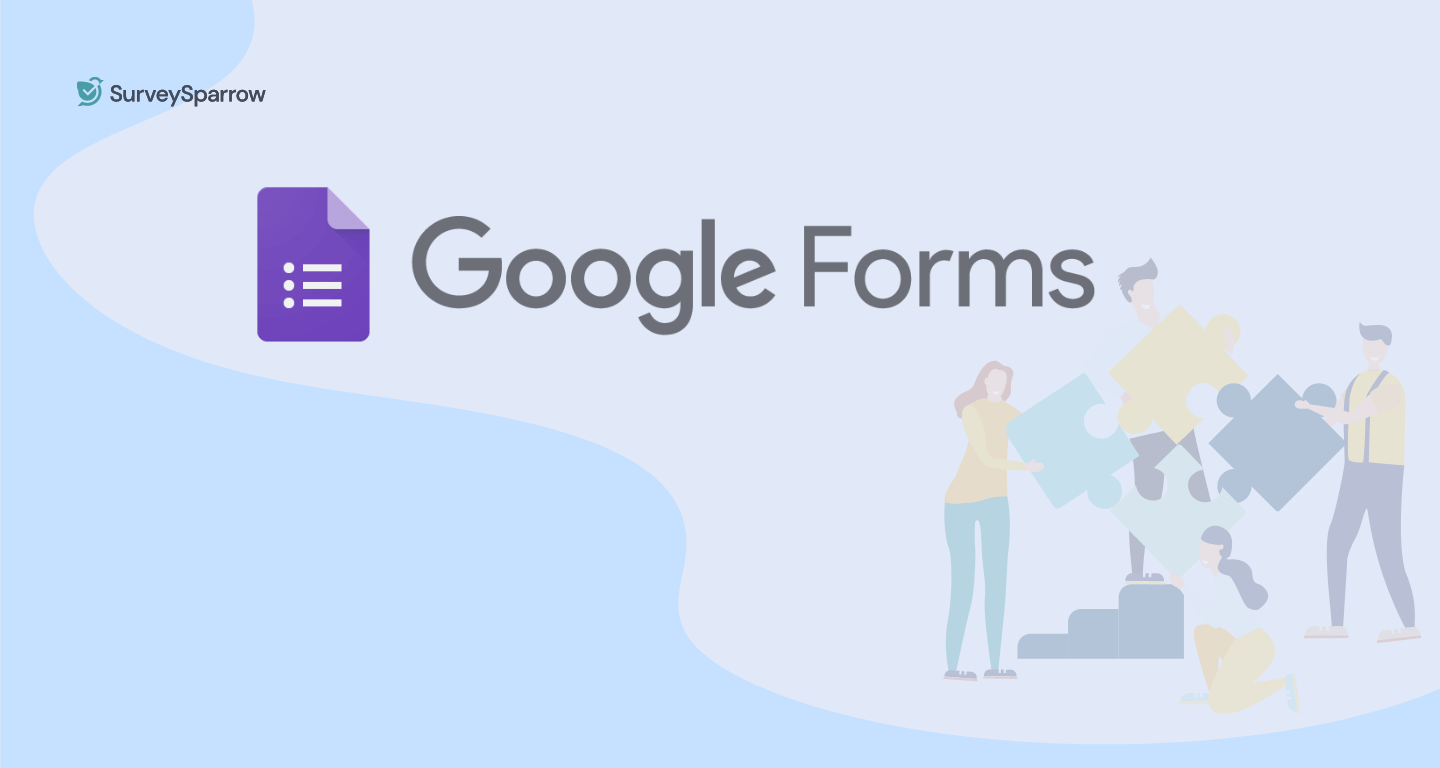Customer Experience
What Is Response Bias And How To Avoid It? A Must Read!
Article written by Kate Williams
Product Marketing Manager at SurveySparrow
15 min read
23 June 2025

60 Seconds Summary:
You might be facing response bias when people answer surveys in ways that don’t reflect their true thoughts. This blog breaks down the most common types of bias that can skew your data like social desirability, question order, or even non-responses and talk about how they quietly undermine decision-making. The good news? These biases can be minimized with smart survey design. Learn simple strategies to collect more accurate, reliable feedback and ultimately make better business decisions.
Surveys play a massive part in every organization’s growth. How? By getting data without response bias that generate insights worth taking action on. These actions, taken correctly, ultimately bring sustained growth to a company.
So to make sure these surveys yield the needed data, your team spends countless hours preparing a template, questions, and flow.
What could go wrong now, right? Well, everything.
If you don't use the right set of questions or ask them the wrong way - it can lead to bias in response. Or simply - response bias.
There are different types of response biases that can ruin your survey. This is why we are writing this blog. To inform you, educate you, and help you avoid them.
If you wanna know about the blog in no time, here's a quick summary of the response bias and how to avoid them.
Survey Bias: A Quick Summary
The following are the types of survey bias, examples and how they can be avoided in a nutshell.
| Types of Survey Bias | What It Is & An Example | How to Avoid It |
|---|---|---|
| Desirability Bias | People answer to look good. For example, saying they support eco-friendly actions more than they do. | Keep surveys anonymous, ask questions in a roundabout way, and use neutral words. |
| Demand Bias | Respondents change answers to fit the survey. Like saying they like a brand more when they see others do too. | Pick the right people for your survey, ask questions without emotion, and don’t lead them to certain answers. |
| Acquiescence & Dissent Bias | Either always agreeing or disagreeing without thinking. For example, always saying ‘yes’ to everything. | Don’t push for a ‘yes’ or ‘no’, mix up the types of questions, and avoid extreme answer choices. |
| Non-response Bias | Skipping questions or the whole survey. Like workers not filling out a survey if it’s not anonymous. | Make your survey short and clear, keep it anonymous, and use different ways to send out your survey. |
| Extreme & Neutral Response Bias | Always pick the strongest or middle option. For example, always choosing ‘completely agree’ or ‘neutral’ | Use clear and positive words, keep the survey simple, and stay away from confusing questions. |
| Question & Answer Order Bias | The order of questions sways the answers. For example, rating a product higher after praising its features. | Begin with the overall questions, group similar ones together, and limit choices in multiple-choice questions. |
| Voluntary Response Bias | Getting one-sided views because everyone in the survey thinks the same. For example, all volunteers have the same opinion on a topic. | Reach out to a varied group of people, and make sure your volunteers have different views |
| Courtesy Bias | Giving answers to make the interviewer happy. Like saying a meal was great at a restaurant during a feedback session to be nice. | Make sure people know their honest opinion is valued, train interviewers to be neutral, and use online surveys |
| Question Order Bias | The sequence of questions affects the answers. Like being more critical if the first few questions were negative. | Shuffle the order of your questions, split them into different groups, and think about doing several short surveys. |
What Is Response Bias?
According to the Encyclopedia of Survey Research Methods, response bias means:
“Response bias is a general term that refers to conditions or factors that occur during the process of responding to surveys, affecting how responses are provided. Such circumstances lead to a nonrandom deviation of the answers from their true value.”
Or in simple terms, if your survey has any factor that can influence the survey participants in how they respond, that is response bias.
Here's an example of how response bias works.
Q. How often do you smoke in a week?
- Frequently
- Often
- Once a week
- Once a month
As you can see, the questions assume that every respondent is a smoker and didn't provide an option for a non-smoker. Thus, the response will be biased as well.

Use AI to Avoid Bias and Generate Effective Surveys!
A personalized walkthrough by our experts. No strings attached!
9 Types Of Response Bias And How To Avoid Them
You know what response bias is, its effect on surveys, and ultimately your business’ growth. But what are the different respondent biases you’ll come across, and how best to avoid them?
That’s what we discuss here with these 9 response biases, starting with;
1. Desirability Bias

The desirability or social desirability bias in surveys comes when respondents know their honest opinions won’t necessarily be appreciated or accepted for sensitive questions.
So, rather than choosing an option aligning with their thoughts, they go with the socially desirable response, over-supporting ‘good behavior’.
Here’s a great example – “On a scale of 1 to 10, how much do you support the concept of net zero carbon?” Or “Do you find everyday alcohol consumption acceptable?”
For these 2 questions, respondents would mostly side with the socially responsible and accepted responses, even when they think differently.
And for questions like “Should you donate a part of your income to charity every month”, you’ll see positive responses, even when those taking the survey don’t donate or haven’t started yet.
How to avoid desirability bias?
Start by making the survey anonymous for all respondents. You’ll straightaway notice more honesty in answers.
Secondly, ask indirect questions where respondents don’t feel like being judged. Example: Instead of asking “How much time do you waste at the workplace every day?”, ask, “How much time do you think people waste in the office every day?”.
Try framing questions with neutral wording. Example: Instead of asking “What do you dislike about the office culture?”, ask, “What changes would you love to see in the office culture?”.
2. Demand Bias
This type of response bias originates when respondents are influenced simply because they’re a part of the survey. They change behaviors and opinions as they’re a part of a study or survey.
There are several reasons why people do that. The most common is when respondents can see the live poll status, as they’ll change answers, to either positively or negatively affect the overall result.
If people really like a brand, they’ll support its ideas without giving much thought to theirs in the survey. That’s another way demand bias is generated.
Lastly, when a respondent personally knows the survey taker or researcher, he/she will provide support by choosing favorable options.
How to avoid demand bias?
Start by choosing survey groups that are appropriate for a particular survey, not the one where you know most people.
To get absolutely honest opinions, write emotion-free questions.
Example: Instead of starting questions like “As a long-term customer…”, begin directly. Talk about how grateful you are to your long-term customers in the introduction, not in the questions.
Also, ask them for their ideas on a new product, website design, etc. Don’t give them yours or they’ll not think much and side with that only.
3. Acquiescence & Dissent Bias
Acquiescence and dissent bias is about survey takers being either extremely positive or extremely negative.
In this state, they’re not thinking about giving an honest, thoughtful answer, but just choosing to be positive or negative with their replies.
Acquiescence bias is an extreme form of social desirability. But here, respondents simply agree with the research and question statements, rather than responding in a ‘socially acceptable’ way. So, whatever the question, the reply will be a ‘yes’ if that’s an option.
The reason for acquiescence bias stems from respondents’ perceptions of how they think the survey organizer wants them to respond. And then some respondents only choose positive options because they worry about their online image.
While it’s good to get a lot of ‘yes’ answers in a survey, they don’t help much when you’re looking to collect and analyze genuine data.
The exact opposite of acquiescence bias is dissent bias. Here, as the name suggests, respondents are always disagreeing with the statements they’re presented with, rather than giving true opinions. The most likely reason for that is to make a mockery of the survey and finish it in no time!
How to avoid acquiescence and dissent bias?
Completely avoid loading and leading questions that prompt survey takers to give a predetermined response. Example: “How great do you think our new product update is?” – Don’t use a question like this.
Another way to avoid such bias is to go beyond the typical ‘yes’ or ‘no’ questions. Try including a rating scale, open-ended questions, and multiple-choice questions.
Try not to use extremely positive or negative answer options. Let people think when they see your options.
4. Non-response Bias

A non-response bias occurs when respondents skip certain questions or the entire survey. A lack of anonymity and a long survey are the prime reasons behind it.
For example, your employees will always be reluctant to answer a non-anonymous employee engagement survey.
In the case of customer surveys too, if you’re collecting feedback after a long time of your customer’s product purchase, they’re unable to give a reliable response and choose to skip the survey entirely.
How to avoid non-response bias?
Firstly, keep your survey short and simple. Don’t ask all the questions in just a single survey.
Send an anonymity-enabled feedback survey at every customer and employee touchpoint to get reliable data right away.
Go omnichannel with your survey distribution. Don’t just send it over an email. Use all the social media platforms and also embed the survey on your website.

Use AI to Avoid Bias and Generate Effective Surveys!
A personalized walkthrough by our experts. No strings attached!
5. Extreme & Neutral Response Bias
When using Likert scale questions in a survey, extreme and neutral response bias creeps in easily if you’re not aware. In this, the respondents either choose the extreme options – ‘least likely’ or ‘most likely’, or stick to the neutral one.
Extreme bias happens mainly when strong words are used in a question.
For example, consider the question: “How justified it is to give a rape accused a chance of trial?”.
Here, the respondent will mostly side with the ‘completely justified’ or ‘completely unjustified’ options.
Neutral response bias is a result of respondents not understanding a survey or wanting to finish it quickly to get some sort of reward or coupon.
Whatever question you ask, these respondents will always choose the neutral or middle option. And that is a sheer waste of time and resources, as this data will lead nowhere.
How to avoid extreme and neutral response bias?
Form questions with positive or neutral wording. This will immediately invoke more thinking among survey takers.
Keep the entire survey simple and short, with jargon-free, one-liner questions and options.
Double-barreled questions are confusing and often lead to neutral response bias. So, try not to use it.
6. Question & Answer Order Bias
The next type of response bias is the question-and-answer order bias. Talking about the question order bias first, as the name suggests, it is a situation where survey respondents give a biased answer because of the type of preceding question they answered.
Basically, survey takers respond in a specific way as a pattern is developed from the preceding questions.
Here’s an example to gain more clarity;
Q1: Did you like the [product feature] of [product name]?
Q2: Are you comfortable with [product name]’s user interface?
Q3: Overall, how would you rate our [product name] on a 1 to 5 scale?
See the sequence of questions here. It starts from a specific feature of a product to its overall performance. If respondents gave a high rating to the first 2 questions, they’d be reluctant to give a lower rating to the product. And that’s how question order bias is created.
The answer order bias is created from respondents’ tendency to select the first or the last option in a multiple-choice question. The intent behind choosing the first answer option is that it is the first option read by the surveyees, which they take to be true.
While choosing the last option is because of the recency effect, i.e., people remember the most recent option clearly so they choose that only.
How to avoid question-and-answer order bias?
Always start with the overall rating question before moving to ones on specific product/service feedback.
Group questions in the same category as one single question, or keep them entirely separate in a survey. Also, try minimizing options in the multiple choice questions, but provide the “Prefer not to say” options to make the survey inclusive.
7. Voluntary Response Bias
A voluntary response bias occurs when your sample is made of people who have volunteered to participate in the survey.
While this isn’t always bad for your survey or data collection, it sometimes results in overreporting on one aspect, as you’re more likely to have a sample with similar opinions, which doesn’t bring out the intended quality of data.
How to avoid voluntary response bias?
- Try to target an audience for your survey. It shouldn’t be the other way around.
- If you’re getting volunteers for a survey, make sure their opinions aren’t similar. The quality of data will be much better.
8. Courtesy Bias

Courtesy Bias arises when people respond to surveys or questions in a way they believe will please the interviewer or avoid offending them.
This bias can lead to dishonest or skewed answers because the respondent is more focused on being polite or agreeable than on providing truthful responses.
For instance, in a customer feedback interview at a restaurant, a diner might praise the service and ambiance even if they found it lacking, simply because they don’t want to be rude to the staff conducting the survey.
Similarly, in an employee satisfaction survey conducted in person, an employee might overstate their satisfaction to avoid any potential conflict with management or to appear as a cooperative team member.
How to avoid courtesy bias?
To mitigate Courtesy Bias, anonymity should be emphasized in surveys. Assure respondents that their honest feedback, whether positive or negative, is crucial and will be kept confidential.
In face-to-face interviews, the interviewer should be trained to maintain a neutral tone and body language, providing a non-judgmental space for respondents to share their true thoughts.
Additionally, using online or written surveys where respondents do not have to face an interviewer can also help reduce this bias.
9. Question Order Bias
Question Order Bias refers to the influence that the sequencing of questions can have on how respondents answer later questions in a survey.
The initial questions can set a tone or context that unintentionally sways the responses to subsequent questions, leading to biased or inaccurate answers.
Consider a public opinion survey that starts with several questions highlighting economic challenges and then asks about overall satisfaction with government performance.
The negative framing of the initial questions may lead respondents to give a more critical assessment of the government than they might have if the questions had been ordered differently.
Another example is a product feedback survey that begins by asking about the most positive features of a product, which could lead to more favorable responses in later questions about overall product satisfaction.
How to avoid question order bias?
To combat Question Order Bias, it’s important to carefully consider the order of questions. Randomizing the sequence of questions for each respondent can help reduce this bias. Using software that allows for question randomization can be very effective.
Additionally, separating questions into distinct sections based on topic can help prevent earlier questions from influencing responses to later ones.
For complex surveys, conducting multiple smaller surveys focusing on specific topics rather than one long survey can also be beneficial.

Use AI to Avoid Bias and Generate Effective Surveys!
A personalized walkthrough by our experts. No strings attached!
Why Resolving Response Bias Is Important?

Data Inaccuracy
When respondents choose options to develop a perceived notion about themselves, the gathered data is highly inaccurate and doesn’t represent the true opinions of the target market. This survey data is not going to help a company achieve its goals.
Poor Strategies and Dissatisfaction
Often, companies ignore or miss out on these biases and make crucial business decisions based on the collected survey data. The results are poor strategies and investments, along with sheer dissatisfaction.
The decision-makers cut down on survey campaigns and market research, which eventually hurts their growth prospects even more.
Low ROI
Poor survey insights guarantee poor product performance, resulting in low return on investment for promising ideas and innovation. Not many organizations handle such setbacks well.
More Time, Money, and Resources
Surveys full of response bias are repeated to test the data again, which takes more time, more money, and more resources. Not an ideal scenario for any company.
Bias Is Not Always Bad!
Yes, just because a survey has bias doesn’t mean it’s bad. If you have a clear idea of how these biases are impacting the overall data quality, it’s fine. Because let’s be honest, eliminating all bias from a survey is not in anyone’s hands.
Biases are also useful in categorizing your target market based on demographics, income level, interests, and more. So ultimately, biases lead to better data collection if you use them correctly.
Just don’t let it run all over your survey; everything will be fine.
To know and understand more about how to tackle survey response biases, and how to conduct winning surveys, our team, at SurveySparrow, is here 24/7. Hit us up and let’s start now. Sign up today!

Use AI to Avoid Bias and Generate Effective Surveys!
A personalized walkthrough by our experts. No strings attached!
Start 14 Days free trial

Kate Williams
Excels in empowering visionary companies through storytelling and strategic go-to-market planning. With extensive experience in product marketing and customer experience management, she is an accomplished author, podcast host, and mentor, sharing her expertise across diverse platforms and audiences.
Frequently Asked Questions (FAQs)
Multiple question types for accuracy, anonymous responding option, set reminders to fill out a survey, multiple sharing options, offline surveys, pre-made templates that worked with 40% more response rates, and much more. This makes us stand out and stay ahead.
Demand Bias occurs when respondents try to guess the survey’s purpose and tailor their answers accordingly. It can be identified when there’s a pattern of responses that seem too consistent or aligned with perceived survey objectives.
Yes, Social Desirability Bias can occur even in anonymous surveys because individuals often respond in ways they believe are socially acceptable or desirable, driven by internal standards and beliefs.
Surveys on controversial or polarizing topics are more prone to Dissent Bias, as they may trigger a contrarian response from those who wish to express non-conformity.
Acquiescence Bias can lead to overly positive feedback in market research, giving a skewed view of customer satisfaction and product acceptance.
Extreme Responses can distort the findings in psychological research by exaggerating tendencies or issues, leading to overgeneralized or inaccurate conclusions about behaviors or attitudes.
Neutral Responding can indicate areas where respondents lack strong opinions or knowledge, which can be useful in identifying topics that require more public awareness or education.
Courtesy Bias can be significant in employee feedback surveys, especially if employees fear repercussions. It can lead to falsely positive feedback, masking real issues.
Yes, longer surveys can amplify Question Order Bias as respondents may become fatigued or influenced by earlier questions, affecting their responses to later questions.
Cultural norms and values can significantly influence Social Desirability Bias, as perceptions of what is socially acceptable vary across cultures.
Related Articles

Survey Tips
Survey Design Psychology: Hidden Biases That Affect Your Research Results
9 MINUTES
29 May 2025

Customer Experience
How to Use Anonymous Surveys to Collect Sensitive Data
8 MINUTES
22 July 2019

Best Of
How to Easily Calculate Confidence Intervals for Your Study
9 MINUTES
16 January 2022

Knowledge
How to Make an Escape Room on Google Forms in Just 4 Steps
10 MINUTES
25 March 2024

Customer Experience
Program Satisfaction Survey Blueprint: From Questions to Actionable Insights
11 MINUTES
30 April 2025
